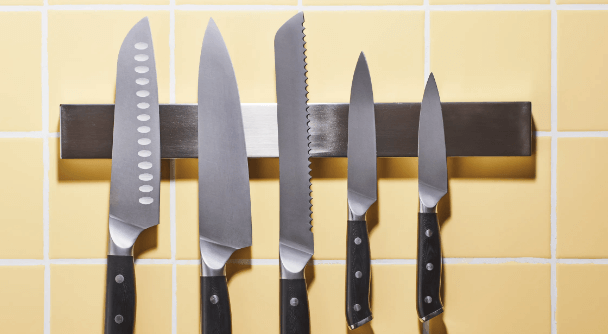How to Choose the Right Kitchen Knife for Your Cooking Style

A good knife is essential for any home cook or professional chef. The right knife can make all the difference in the kitchen, from slicing through vegetables and meats with ease to creating the perfect julienne. However, knowing which suits your cooking style can be challenging with so many knives available. This article will provide you with a guide on choosing the right kitchen knife.
Here are the top things you should know before choosing the right knife:
Consider the Blade Material
The blade material is one of the most crucial factors when choosing a knife. Different materials will have different properties, such as hardness, durability, and corrosion resistance. For example, knives with stainless steel blades are durable and corrosion-resistant, making them a good choice for everyday use. On the other hand, high-carbon steel blades are incredibly sharp and hold their edge well, but they require more maintenance and are more susceptible to rust. When choosing the blade material, consider your experience and skill level. Some materials, such as high-carbon steel, require more maintenance and sharpening skills, while stainless steel may be easier to maintain but may not hold its edge.
Think About the Blade Shape
The shape of the blade is another essential factor to consider when choosing a kitchen knife. Different blade shapes are designed for different purposes, such as slicing, chopping, and dicing. For example, a chef’s knife is a versatile tool that can be used for various tasks, including slicing, chopping, and mincing. A paring knife, on the other hand, is designed for precision work, such as peeling and trimming. Choosing a blade shape that aligns with your preferred cutting technique is also essential. For example, a serrated blade is ideal for slicing bread, while a Nakiri blade is perfect for precise vegetable work.
Choose the Right Handle Material
The handle material is also an essential factor to consider when choosing a kitchen knife. The handle should provide a comfortable grip and allow for precise control when cutting. Common handle materials include wood, plastic, and metal. Wooden handles are comfortable to grip and can provide an excellent balance for the knife. Plastic handles are lightweight and easy to clean, while metal handles are durable and provide excellent control. When selecting a handle material, consider your grip preferences and how much control you need. Wooden handles can provide a better grip, but plastic and metal handles may be easier to maintain and clean.
Consider the Knife’s Weight and Balance
The weight and balance of the knife are also essential factors to consider when choosing a knife. The knife’s weight should be comfortable for you to hold and use for an extended period. A well-balanced knife will help you to control the blade better and reduce fatigue. Hold the knife by the handle to find the right balance and check if it feels comfortable. Finding the right weight and balance is essential for comfort and precision when using a knife. A well-balanced knife will reduce the strain on your wrist and hand, making it easier to control and less tiring.
Look for Quality and Durability
Finally, when choosing a knife, look for quality and durability. A good quality knife will last longer and perform better than a cheaper, lower quality knife. Look for knives with full tangs, meaning the blade extends through the handle. This design provides better balance and durability. Also, choose a knife from a reputable brand with a good quality and customer service reputation. Investing in a high-quality, durable knife is a smart choice for any home cook or professional chef. A well-made knife will last longer, perform better, and ultimately save you money in the long run by reducing the need for frequent replacements.
Conclusion
Choosing the right knife can significantly impact your cooking experience. By considering factors such as blade material, blade shape, handle material, weight and balance, and quality and durability, you can find the perfect knife for your cooking style. Remember to prioritize quality and invest in a knife that will last years.




